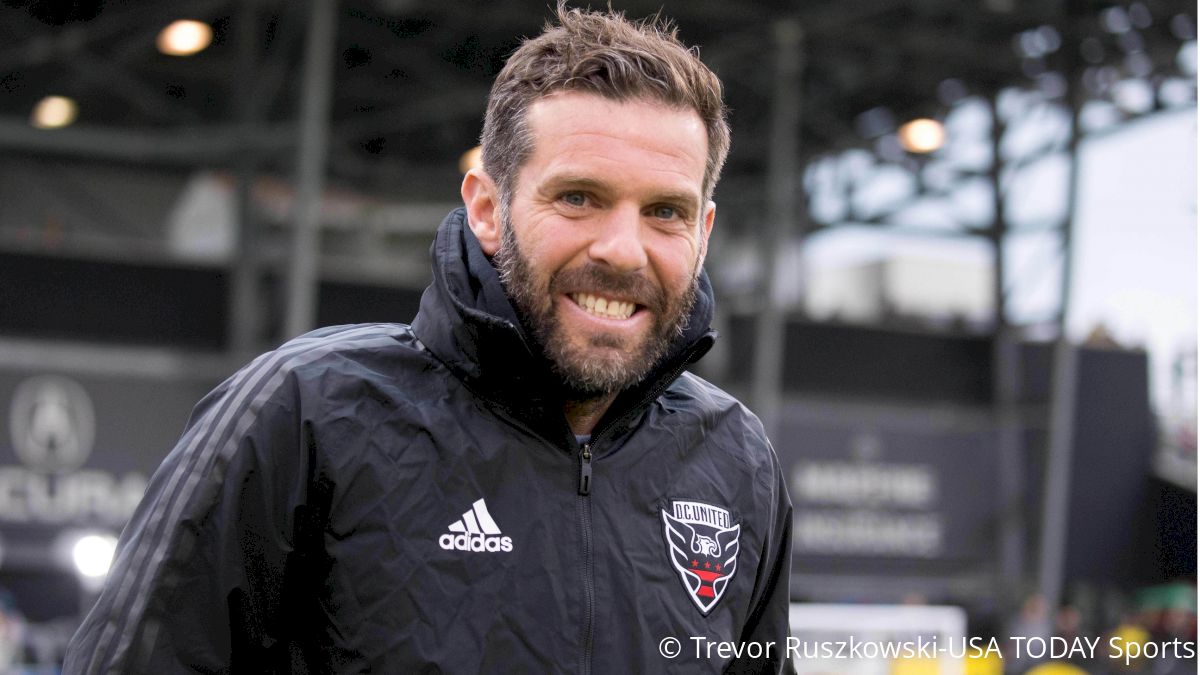Tactical Flexibility Becoming An Option For Ben Olsen & D.C. United
Tactical Flexibility Becoming An Option For Ben Olsen & D.C. United
After years of fielding teams with four defenders, Ben Olsen has leaned on three center back looks this year for D.C. United

Throughout his coaching career, Ben Olsen has always fielded formations with four defenders. There have been plenty of different arrangements with the front six, but before 2019 Olsen had never sent a team out in an MLS game from the start that featured three center backs.
That consistency has completely changed this year, though, with United's longest-serving manager using a variation of three center backs on 10 different occasions in the current campaign.
The shift started out as being a necessity when Joseph Mora went out injured back in March. But in recent weeks, Olsen has gone back to the formation even with his team as healthy as it has been all year. Now the Black-and-Red have the ability to pull a couple of clubs out of the bag in terms of how they line up in any given game.
What formation Olsen will use going forward isn't quite set in stone, either.
"I wouldn’t say I prefer either. It’s nice to have that flexibility, with players understanding both," Olsen said on Tuesday after United's practice session. "Sometimes it’s a necessity, but that’s not the case right now. We have a lot of available players, this is a matter of getting the best group on the field."
For most of the players on the field, the roles don't vary much from formation to formation. Bill Hamid isn't asked to do anything different, while Leonardo Jara and Joseph Mora still get up the flanks while providing defensive cover. And for Russell Canouse, the job is mostly the same as one of two defensive midfielders, with only minute differences.
"When I think about my role, it’s always similar. I try to make the middle compact, and close the game down, and push the game wide to areas that are tougher for the opponents to score from," Canouse told FloFC on Tuesday. "The three- or five-back [formation] is nice because you have that support . . . you can press out."
Using the new system has been a work in progress for United throughout the year. There have been some good results for the Black-and-Red when using three center backs, including three wins on the road. At times, though, D.C. have had some struggles, noticeably early in the first half recently against the New England Revolution.
With Luciano Acosta out suspended, Olsen opted for the 3-4-2-1 against the Revs at Audi Field two weekends ago. But two early goals made life tough for D.C., who eventually clawed their way back to a draw. But in the next two games, United seemed to understand the formation a bit better, even though they picked up just three points total against FC Cincinnati and Atlanta United.
"Looking at the two road games we used it, I think there is a cohesiveness and togetherness from the team that is being developed in that formation," added Canouse. "Guys are understanding their roles, how they have to manage [their roles] during the game."
That was a sentiment that was echoed by his manager.
"I thought over the last few games, since New England, we’ve shown real growth, and understanding of the structure, both in possession and out of possession," Olsen said on Tuesday. "We are also pretty well versed with the four-back system, but I like the growth of where we’ve gone over the last couple of games."
Whatever formation Olsen decides to go with, starting with Saturday's trip against the Chicago Fire, he would prefer to stick with one formation on a consistent basis. But after some experimenting in 2019, he now knows that he can call upon a different look if the time comes.
"It’s game to game, but at some point, it’s good to stick with one and continue to grow."